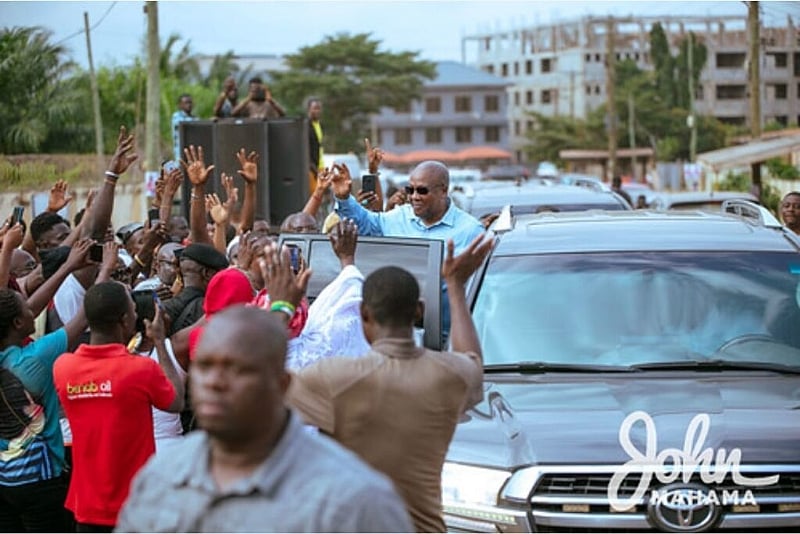President John Dramani Mahama received a rapturous welcome in a yet-to-be-identified town a few days ago on his “Thank You” tour, captured in a video that has quickly gone viral. The footage showcases an outpouring of support and affection as large crowds gathered along the roadside, eagerly awaiting the passage of Mahama’s convoy.
The enthusiastic reception comes at a time when the Ghanaian cedi has been experiencing a period of appreciation against the US dollar and other major trading currencies, prompting speculation and drawing parallels between the economic upturn and the president’s popularity.
The video depicts a scene of vibrant energy and palpable excitement. As the convoy made its way through the town, the crowds erupted in cheers, chanting Mahama’s name and singing his praises.
The air was thick with celebratory calls, with people visibly moved by the opportunity to witness the president’s presence. The spontaneous display of affection was further punctuated by traditional appellations, chanted in honour of Mahama, highlighting the deep-seated respect and admiration the community holds for him.
The intensity of the welcome undeniably signals a reservoir of support for the president. The sheer scale of the gathering, the passionate chanting, and the visible joy on the faces of the crowd speak volumes about the enduring connection between Mahama and a significant segment of the Ghanaian population.
What adds another layer of intrigue to this outpouring of support is the backdrop of the cedi’s recent positive performance. After a period of significant depreciation, the Ghanaian currency has begun to show signs of strengthening against the dollar and other key currencies. This economic development, even in its nascent stages, has been perceived by some as a positive sign and has fueled discussions about the potential impact of different leadership styles on the nation’s financial stability.
It’s impossible to definitively link the cedi’s appreciation directly to Mahama’s return to power. A multitude of factors influence currency fluctuations, including government policies, global economic trends, and investor sentiment. However, the timing of the jubilant reception, coinciding with the positive economic news, has naturally sparked speculation and prompted some to draw parallels between Mahama’s administration and the current economic climate.
The viral video is undoubtedly a powerful visual representation of public sentiment. It serves as a reminder of Mahama’s enduring popularity and his capacity to connect with communities across Ghana. Furthermore, it highlights the enduring relevance of economic performance in shaping public perception of political figures.
Whether this display of support translates into tangible political momentum remains to be seen. However, the video provides a fascinating snapshot of the current political climate and offers valuable insight into the public’s perception of leadership and its impact on the nation’s economic well-being.
In conclusion, the rousing welcome John Mahama received, captured in the viral video, is more than just a spontaneous expression of support. It is a nuanced commentary on the intricate relationship between leadership, economic performance, and the aspirations of the Ghanaian people.
As the nation navigates its economic challenges and prepares for future elections, this video serves as a potent reminder of the enduring power of public sentiment and the importance of addressing the economic concerns of the populace.
Anthony Obeng Afrane


